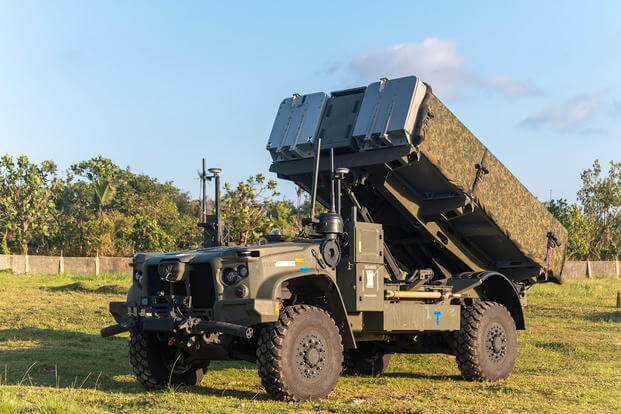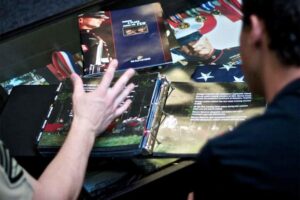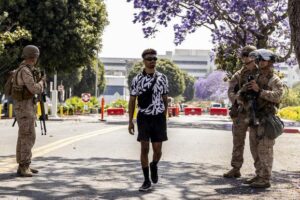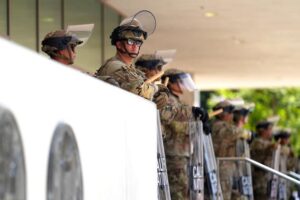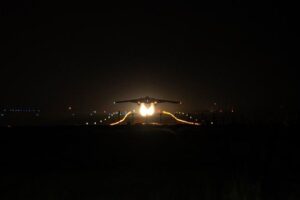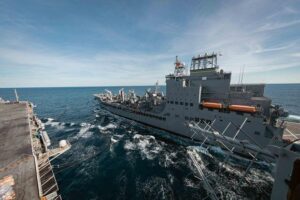Marines Unveil New Weaponry in the Philippines Amid Regional Tensions
SUBIC BAY, Philippines — The Hawaii-based 3rd Marine Littoral Regiment is testing its latest military advancements in the Philippines during the annual Exercise Balikatan. This deployment comes at a time when tensions with China continue to escalate.
The 3rd Marine Littoral Regiment, formerly known as the 3rd Marine Regiment, has brought its newly acquired Navy-Marine Expeditionary Ship Interdiction System (NMESIS) to the northern Batanes Islands, near Taiwan. The regiment’s transformation into a littoral unit aligns with the Marine Corps’s Force Design 2030, aiming to focus on naval and coastal warfare.
Col. John Lehane, the regiment’s commander, emphasized the strategic importance of controlling maritime choke points. “One of the things we looked at is, if you can control choke points, then you control the commerce that goes through them,” Lehane explained. This deployment marks the first time NMESIS is being used overseas by the regiment, setting a precedent for future operations.
This year’s Exercise Balikatan sees the regiment not only deploying NMESIS but also other new weapon systems. Lehane clarified, “We are an initially operational capable element of the fleet Marine force who happens to do some experimentation, but my first and only focus is making these Marines as lethal and as survivable as possible.”
The deployment coincides with Chinese military maneuvers in the region. Recently, the Chinese aircraft carrier Shandong operated near the Philippines, intensifying regional security concerns.
During the joint U.S.-Philippine military exercises, the 3rd MLR tested its Marine Air Defense Integrated System (MADIS) in Zambales. This system, used to neutralize drones, was previously tested in Hawaii.
Meanwhile, Chinese media reported maritime control over Sandy Cay in the disputed Spratly Islands. In response, Philippine forces raised their national flag on the sandbank, underscoring the ongoing territorial disputes.
The backdrop of these exercises is the Marine Corps’s shift under Force Design 2030, reminiscent of World War II island-hopping strategies. This new approach involves high-tech equipment, including drones and advanced missiles, to enhance operational capabilities.
NMESIS, replacing traditional artillery, was tested in Hawaii in 2021. Sgt. Christian Chonperez, experienced in traditional artillery, noted the system’s advanced capabilities and user-friendly design. NMESIS’s remote-controlled vehicle chassis allows for rapid redeployment and tactical flexibility.
The broader strategic context involves China’s claims over the South China Sea, a vital global trade route. An international court previously ruled against Beijing’s claims, but China has continued to assert its presence through military infrastructure on disputed islands.
Additionally, tensions are rising around Taiwan, with Philippine military leaders preparing for potential regional conflicts. Gen. Romeo Brawner highlighted the Philippines’ readiness to respond to any developments concerning Taiwan, emphasizing the country’s strategic position.
In Zambales, the MADIS system was further tested against drone threats. This system, developed based on experiences in the Middle East, adapts to new threats by integrating advanced detection and neutralization technologies.
Despite the new focus on technology, Col. Lehane reassured that fundamental infantry skills remain central to Marine training. “No matter how amazing all of this equipment is… all of that is mildly interesting if you can’t do the basics,” Lehane stated.
© 2025 The Honolulu Star-Advertiser. Visit www.staradvertiser.com. Distributed by Tribune Content Agency, LLC.

